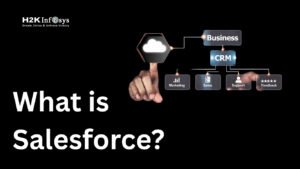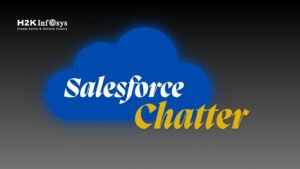Salesforce offers an endless array of customisation choices, which is one of its major features. Not only can you modify it to fit your particular business requirements, but you can also make it a universal solution that can help other people too.
This article will explore the various package kinds and go over how to publish packages to the Salesforce AppExchange. It will also highlight the benefits, drawbacks, time commitments, and potential difficulties that come with developing packages. Check out the Salesforce certification course online to learn more.
Prepare for Salesforce App Development
You have an idea, but it’s crucial to go through every step involved in getting your app released before actually constructing it.
- Define the Package Scope: Clearly outline the features, functionalities, and components that your package will contain in order to establish its scope. This guarantees that the package serves its intended purpose and helps set boundaries.
- Gather the Requirements: Work together with stakeholders to obtain requirements for the package, such as business representatives and end users. Recognize their requirements, problems, and goals in order to influence the package’s functionality and user experience.
- Architecture and design: Make a package design and architectural plan based on the criteria that have been gathered. The structure, data model, workflows, user interface, and integration points of the package should all be described in this plan. When designing the package, take best practices, scalability, and extensibility into consideration.
- Develop and Set Up the Components of the Package: To add the required features and functionalities to the package, use Salesforce development tools and metadata. Writing Apex code, making custom objects, setting up workflows, making Visualforce pages or Lightning components, and, if required, interacting with other systems are all included in this.
- Quality assurance and testing: Make sure the product works as expected and satisfies quality standards by thoroughly testing it. Unit testing, integration testing, system testing, and user acceptability testing are all included in this. To find and address any problems or flaws, test various scenarios, edge cases, and user workflows.
- Documentation: To assist customers with installing, setting, and utilising the package, provide thorough documentation. This covers release notes, installation manuals, user manuals, and any other pertinent literature. Users can better comprehend and reap the benefits of the product with the aid of clear and succinct documentation.
- Release management and versioning: To handle various package releases, put versioning into practice. To keep track of modifications, improvements, bug fixes, and new features, assign version numbers and keep up a release management procedure. Users are able to monitor updates and appropriate version control thanks to this.
- Permissions and Security: Examine the package’s security requirements. Since you must pass the security review, and define the proper user permissions, access controls, and data security procedures to make sure the package adheres to security best practices and satisfies compliance standards.
- Packaging and Licensing: Ascertain whether your package is licensed under a free, paid, or subscription-based arrangement. To generate a package that includes all required parts, dependencies, and configurations, use the Salesforce packaging tools. This makes it easier to deploy and install the package across several organisations.
- Distribution and Deployment: Choose how you want your package to be distributed. Distribution options include sending it directly to particular organisations, via a private distribution channel, or through the Salesforce AppExchange listing. To ensure that the package is installed and configured at the target organisations without a hitch, plan and carry out the deployment procedure.
It’s time to start the building phase as soon as your plan is complete.
Types of Packages: 1st Generation and 2nd Generation
The first packaging format in Salesforce was called First Generation Packages (1GP). They have Apex code and metadata components, and they are connected to a particular organisation. Nevertheless, 1GP packages are limited with regard to dependency management and version control.
A more recent packaging type called 2nd Generation Packages (2GP) provides improved features for packaging and delivering applications. They offer improved modular development, dependency management, and version control. 2GP gives developers the ability to create packages with customizable namespaces, which facilitates dependency and conflict management.
It is advised to employ 2nd Generation Packages (2GP) for Salesforce package development, taking into account the benefits and drawbacks. When it comes to version control, dependency management, and customization possibilities, 2GP offers notable advantages over 1GP.
Better scalability, easier upgrades, and a more efficient development process are all provided by it. 2GP is a good option for developers wishing to commercialise their apps and reach a wider audience because it is also made for commercial distribution on the Salesforce AppExchange.
Developers switching from 1GP to 2GP may experience a learning curve at first, but overall, the advantages and benefits outweigh the difficulties. Developers can benefit from enhanced packaging options, increase package maintainability, and give customers a more adaptable and configurable experience by utilising 2GP.
When deciding whether or not to adopt 2GP, it’s critical to carefully assess your unique requirements and take into account elements like project complexity, scalability requirements, and future expansion.
Managed and Unmanaged Packages
You must package your program using either managed (usually) or unmanaged types after it has been built:
Managed Packages: On the Salesforce AppExchange, managed packages are intended for commercial distribution. They provide features including licence management, versioning, and upgradability. Developers can keep access to the source code restricted in order to safeguard their intellectual property. With managed packages, there is a distinct division between the subscriber’s organisation and the package, making maintenance and support simpler.
Unmanaged Packages: Code snippets and application distribution within an organisation are the main uses for unmanaged packages. Compared to managed packages, they do not provide the same level of versioning and upgradeability. Unmanaged packages give users complete access to the source code, enabling personalization and alteration within their organisation. On the other hand, this can present problems for maintenance and upgrades.
Prepare your package for AppExchange
You will require a variety of tools and include multiple roles in order to develop and manage a Salesforce package. Here is a summary of package preparation, along with the primary tools and roles needed to create and manage a package.
- Organisational Salesforce Developer Edition: A specific Salesforce organisation used for testing and development. It offers a sandbox environment where you can construct, package, and test your program.
- Tools and Metadata for Salesforce: To develop and manage your package components, use Salesforce metadata types and tools like Salesforce DX, Salesforce CLI, or Metadata API.
- Version Control System: Use a version control system, such as Git, to manage multiple versions of your package, collaborate with team members, and keep track of changes.
- Frameworks for testing (not required): To make sure your package is reliable and stable, automate testing with Apex unit tests, Selenium, or other testing frameworks.
- Documentation: To generate user guides, installation guides, release notes, and any other documentation needed for your package, utilise tools such as Markdown or a documentation platform.
- Tools for Packaging and Deployment: To develop and maintain your package, use Salesforce packaging tools like the Packaging UI or Salesforce CLI. These tools aid in the definition of versioning, dependencies, and package information.
Pricing Considerations
Salesforce package prices vary depending on a number of variables, such as the kind of package, functionality, target market, and licence arrangements. While some programs are provided without charge, others have tiered pricing schemes or are charged according to the number of users. One-time payments, monthly subscriptions, and revenue-sharing agreements with Salesforce are further examples of pricing methods.
Here is the most recent pricing information:
- There is no longer an initial review charge of $2,550. The payment of this charge will no longer be necessary for package developers to submit their managed packages for security evaluation.
- Additionally, there is no longer a $150 annual fee for maintaining security reviews, as there was previously. This charge will no longer be necessary for developers to maintain the status of their security reviews.
- The security review charge for paid apps is now $999 per try. This cost will be incurred each time a paid solution on the AppExchange is subject to a security evaluation effort.
- The policy for Security Reviews for free solutions is presently being redefined by Salesforce. As of the specified date, security reviews for free solutions are provided without charge. In the near future, Salesforce will offer more details and recommendations about the new free solution strategy.
For the most accurate and current pricing information regarding security reviews for managed packages on Salesforce, it’s always advised to consult with Salesforce representatives or refer to the official Salesforce documentation. It’s important to note that policies and pricing may change on AppExchange.
Conclusion
One effective method for distributing and making money off of apps on the Salesforce platform is through Salesforce package development. Successful package development requires an understanding of the various package kinds, the steps involved in publishing to AppExchange, pricing considerations, and the associated benefits, drawbacks, time commitments, and potential obstacles. You can also check out the Salesforce developer certification course to learn more.





























